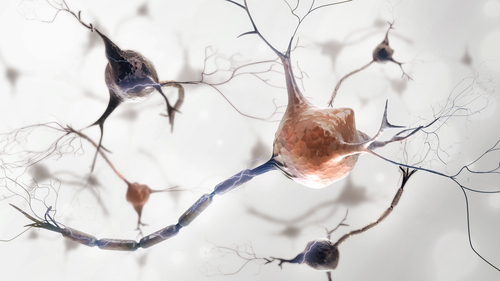Mutated CLN3 Protein May Indirectly Promote Abnormal Signaling Cascades Involved in Juvenile Batten Disease, Study Finds
Written by |

Mutated forms of CLN3 protein may be involved in the abnormal activation of signals in brain cells that, in excess, could promote cell death, a study has found, which suggests that inhibiting these signaling cascades could represent a new therapeutic strategy to prevent the progression of the juvenile form of Batten disease.
The study, “Molecular mechanisms of the juvenile form of Batten disease: important role of MAPK signaling pathways (ERK1/ERK2, JNK and p38) in pathogenesis of the malady,” was published in the journal Biology Direct.
Juvenile Batten disease is caused by the deletion of a small part of the CLN3 gene sequence. This genetic alteration promotes the production of an abnormal form of CLN3 or battenin protein, and the consequent buildup of fatty molecules (known as lipofuscin) within lysosomes — compartments within the cell that break down substances that are no longer needed.
However, the precise function of CLN proteins, and the molecular mechanisms behind the development of Batten disease remain elusive.
Therefore, Russian researchers used computer analysis to review the biological interactions of CLN3 protein in nerve cells. Using genetic data available from CLN3 patients with different rates of disease progression, the team started by investigating the interaction of CLN3 with proteins found on the surface of cells.
The interactive data revealed that CLN3 could not activate any relevant cell signaling receptor. However, the protein could interact with a specific class of proteins called ion channels, in particular the ATP1A1 sodium-potassium channel.
The function of such surface proteins is to ensure the normal balance of ions inside cells, working as a cellular pump and allowing ions to flow through the channels they form. However, ion channels may also trigger some signals that can indirectly activate important enzymes inside cells.
Supported by its findings, the team hypothesized that “CLN3 is involved in the correct formation of the АТР1А1 spatial structure in neurons.”
Mutated or shorter versions of CLN3 protein could potentially “lead to a shift of ATP1A1 to the signaling conformation,” and promote the activation of the signaling receptors and its downstream effectors.
“When neurons are unable to suppress excessive signaling cascades, their death is imminent,” the researchers said.
To further investigate CLN3’s impact on signaling cascades, the team restricted their computer search to find interactions with cell surface proteins that could trigger important cellular signals in the brain.
Only two proteins — KCNIP3 and TFRC — were found to meet all the search criteria. The team noted that future studies are needed to fully demonstrate the role of these proteins in Juvenile Batten disease.
When researchers conducted a broader analysis with all CLN proteins associated with Batten disease, they found that all of them directly or indirectly interacted with the surface receptor epidermal growth factor (EGFR).
This finding suggests that inhibitors of EGFR or of its downstream signals — which are already approved or under development for other diseases — could potentially represent a treatment strategy for juvenile and other forms of Batten disease.
Signaling inhibitors “may slow down, significantly delay or even (at least temporally) stop the development of this so far incurable devastating disease,” the researchers wrote.




